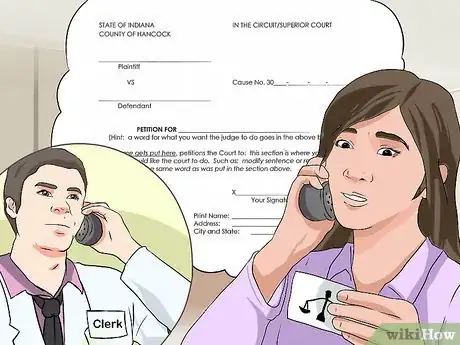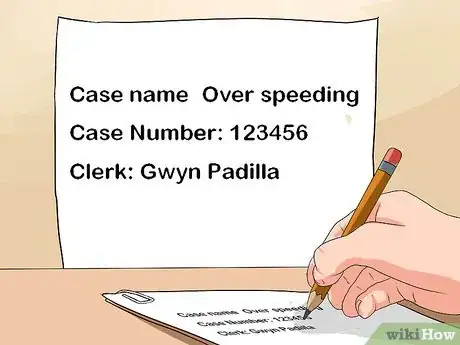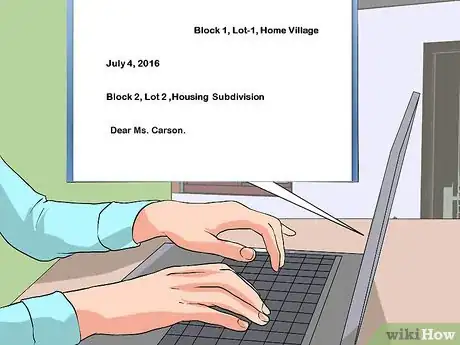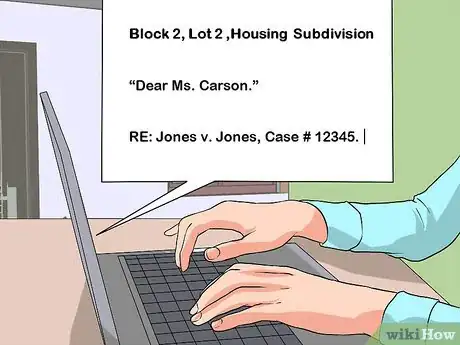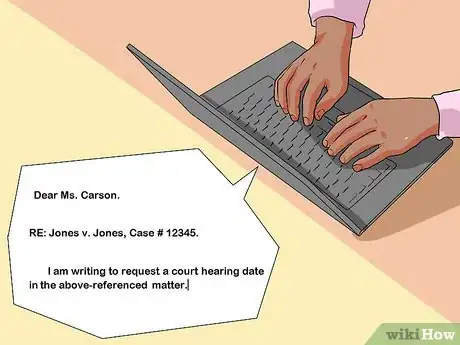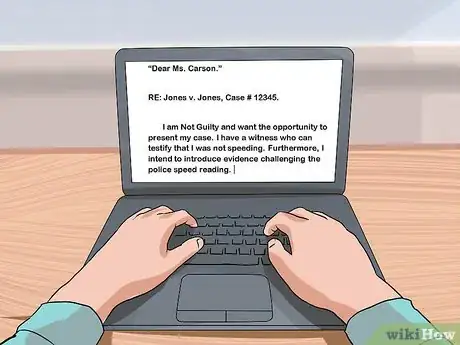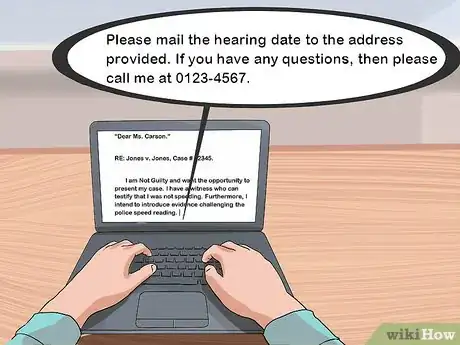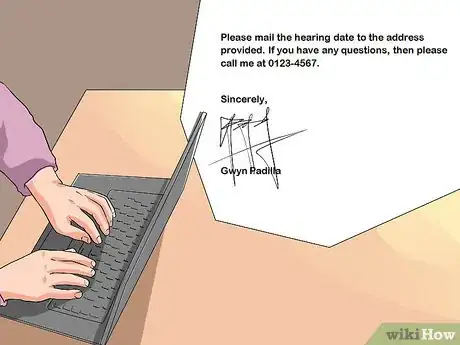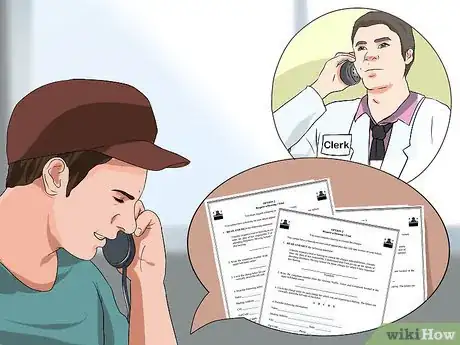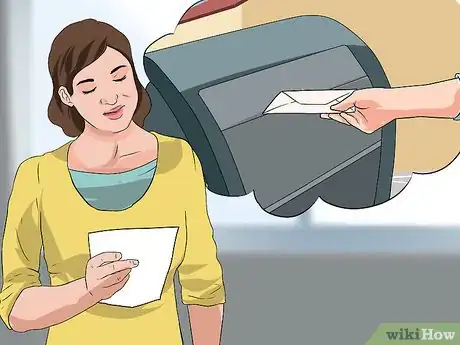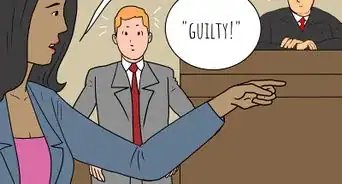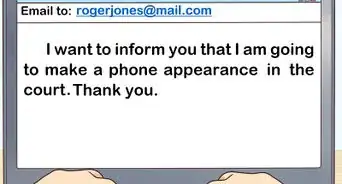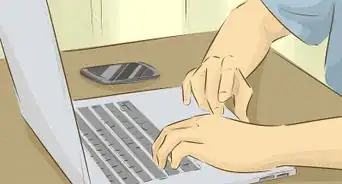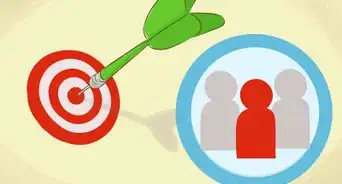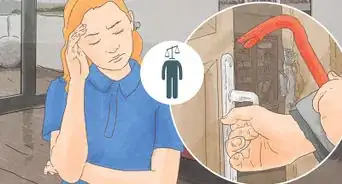This article was co-authored by Clinton M. Sandvick, JD, PhD. Clinton M. Sandvick worked as a civil litigator in California for over 7 years. He received his JD from the University of Wisconsin-Madison in 1998 and his PhD in American History from the University of Oregon in 2013.
This article has been viewed 87,140 times.
You can request a court hearing in a variety of ways. Typically, you would file a motion with the court and pick up a hearing date when you file. Alternately, you could request a hearing date in person. If you want to request a hearing date using a letter, then you should check to see if the court allows you to request a hearing in this manner. If the court does, then you should write the letter as you would a business letter.
Steps
Gathering Necessary Information
-
1Identify why you want a hearing. There are many reasons why you might want a hearing. For example, you may have been charged with a traffic violation. In that situation, you have the option of pleading guilty or of requesting a hearing from the court.
- Alternately, you may be in the midst of litigation and want a hearing so that you can bring something to the attention of the judge. Maybe the other side in the lawsuit has not handed over requested documents. At the hearing, you can ask the court to order the other party to do something.
- Identify your reason for the hearing because you might not be able to use a letter to request a hearing in all situations.
-
2Check if you can request a hearing by letter. Call the court clerk and ask if you can request a hearing by letter. Sometimes, you need to file a lawsuit before you can get a hearing. In that situation, you need to file a petition with the court. In the petition, you will explain the facts surrounding your lawsuit and request relief from the court. The state of Indiana has provided a petition template at http://www.hancockcoingov.org/images/stories/clerk/2012prosepetition.pdf. You could adjust this to suit your needs.
- Also, some courts might not accept letters. Instead, you will need to fill out a motion form. Your court should have blank motion forms for you to fill out. In the form, you explain what you want to talk to the judge about at the hearing. If your case is ongoing, then you might need to file a motion instead of writing a letter.
- A blank sample motion form for Colorado is available at https://www.courts.state.co.us/Forms/renderForm1.cfm?Form=365. Check with your court if they have a blank motion form.
Advertisement -
3Gather information about the case. To write the letter, you will need basic information about your case. Relevant information includes:[1]
- your case name
- your case number
- the name of the court clerk
-
4Visit your self-help center. Some courts have self-help centers where people representing themselves can go to ask questions. To find out if your court has a self-help center, call the court clerk. Someone at the self-help center can look over your letter or advise you of how to request a hearing if writing a letter is not appropriate.
- You also might try to find a legal aid organization near you. Legal aid organizations provide legal services to low-income people either for free or at a reduced rate. You can find a legal aid organization near you by visiting the Legal Services Corporation’s website at www.lsc.gov. Search by entering your zip code.
Writing Your Letter
-
1Search for a form letter. Some courts print off forms that you can use to request a hearing. Instead of writing a letter, you should get the form and fill it out.
- Pinal County, Arizona, for example, has a form you can use to request a hearing in traffic court.
- To check if your court has a form you can use, call the court clerk and ask. Sometimes, courts will require that you complete a Notice of Hearing form first, which will then allow you to get a hearing date.
-
2
-
3Insert a salutation. If you know the court clerk’s name, then you can use it. For example, “Dear Ms. Carson.” Otherwise, type “Dear Clerk” for a salutation.[4]
-
4Add a heading. A heading will give the court some clue about the case. For example, if your case is already ongoing, then you should insert the caption information. Pull out the documents already filed in the case, such as the petition or answer. Locate the names of the parties and the case number.
- The heading might read: “RE: Jones v. Jones, Case # 12345.”[5]
-
5Begin the letter with your request. You shouldn’t waste too much of the reader’s time. Instead, get directly to the point. In the first paragraph, ask for the hearing in your case.[6]
- For example, you could simply state, “I am writing to request a court hearing date in the above-referenced matter.”
-
6Explain why you need the hearing. For example, if you want a hearing on a traffic violation, then type, “I am Not Guilty and want the opportunity to present my case. I have a witness who can testify that I was not speeding. Furthermore, I intend to introduce evidence challenging the police speed reading.”
- Alternately, you might request a hearing because a party has not turned over evidence. In this situation, you could type, “The police department has not responded to my request for a copy of my arrest record. I made the request in writing on Jun 12, 2015. It has now been three months. I am requesting an order to compel the department to turn over a copy of the record.”
-
7Provide a contact number. In the final paragraph, you should include your phone number. Although you have included your address at the top of the letter, it might be easier for the clerk to call you.[7]
- Sample language could be, “Please mail the hearing date to the address provided. If you have any questions, then please call me at [insert number].”
-
8Sign the letter. Space down two lines from your concluding paragraph and insert “Sincerely.” Then space down three or four lines and type your name. You can then sign your name in the space provided.[8]
-
9Make copies of your letter. You may need to send a copy of the letter to the other party to your lawsuit. To check, you should ask the court clerk by calling.
- If you need to serve notice on the other party, then you can typically do so by mailing the letter or by having it served on the other party. Service may be made by anyone 18 or older who is not a party to the lawsuit.
-
10Mail the letter. Send the letter certified mail, return receipt requested so that you know the court has received it. If you don’t hear back from the court in a week, then you should follow up with a phone call.
References
- ↑ http://www.lawaccess.nsw.gov.au/Pages/representing/lawassist_readingwritinghome_wysk/lawassist_letters_wysk/lawassist_letters_courts.aspx
- ↑ http://www.lawaccess.nsw.gov.au/Pages/representing/lawassist_readingwritinghome_wysk/lawassist_letters_wysk/lawassist_letters_courts.aspx
- ↑ http://www.lawaccess.nsw.gov.au/Pages/representing/lawassist_readingwritinghome_wysk/lawassist_letters_wysk/lawassist_letters_courts.aspx
- ↑ http://www.fairfaxcounty.gov/courts/circuit/pdf/ccr-d-230.pdf
- ↑ http://www.fairfaxcounty.gov/courts/circuit/pdf/ccr-d-230.pdf
- ↑ http://www.lawaccess.nsw.gov.au/Pages/representing/lawassist_readingwritinghome_wysk/lawassist_letters_wysk/lawassist_letters_courts.aspx
- ↑ http://www.lawaccess.nsw.gov.au/Pages/representing/lawassist_readingwritinghome_wysk/lawassist_letters_wysk/lawassist_letters_courts.aspx
- ↑ http://thelawdictionary.org/article/how-to-write-a-request-for-continuance/
About This Article
In some courts, you can request a hearing by writing a letter to the clerk. Call your court clerk to ask if you can request a hearing by letter. You might need to file a lawsuit before you can request a hearing. If it’s okay to write a letter, ask for a form letter for which you just need to fill in the blanks. You’ll need your case name and number and the name of your court clerk for your letter. If you’re writing the letter from scratch, open your letter by writing something like, “I am writing to request a court hearing date in the above-referenced matter.” You’ll also need to explain why you need the hearing. For example, if you want a hearing on a traffic violation, write something like, “I am Not Guilty and I want the opportunity to present my case.” For more tips from our Legal co-author, including how to address your letter, read on.

